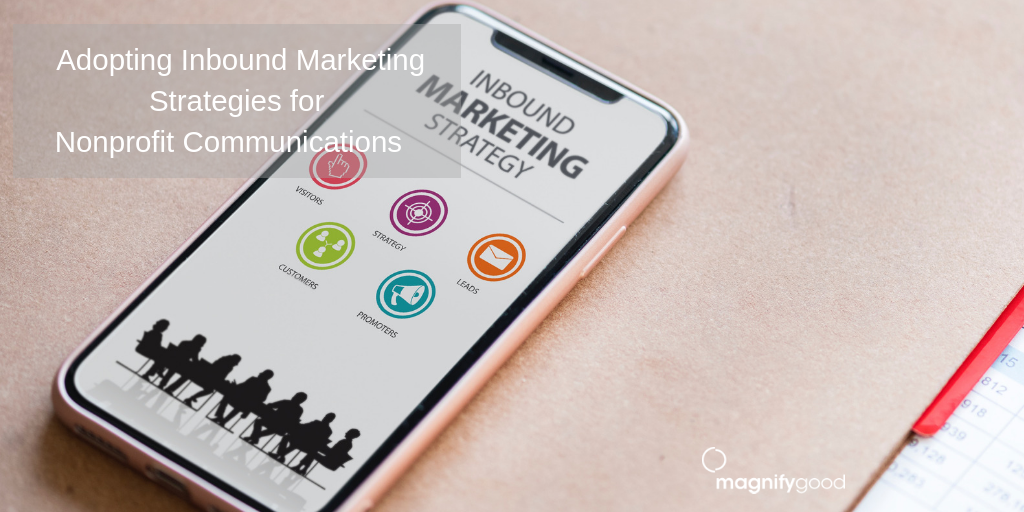Times have changed. And so has the way donors connect with the organizations that share their passions, beliefs and worldview. The digital landscape has altered traditional marketing methods, challenging the way that businesses and nonprofit organizations connect with individuals.
Luckily, years of trial and error in the for-profit sector has produced strategies and frameworks that can be adopted by the nonprofit sector. Inbound Marketing has presented a new opportunity for nonprofit organizations to connect with donors at each stage of their journey.
The donor’s journey maps human behavior in the age of the Internet and all things digital. It is the natural path prospective donors take to become aware of, evaluate and donate to causes that connect to their passions and align with their values. Understanding the journey can help your organization engage with prospective donors seeking to connect with your organization.
The digital world has played a large role in shifting the path of the donor’s journey. Prospective donors are in a constant state of search, looking for organizations that align with their passions. Traditionally, businesses and social sector organizations alike have focused on tactics that interrupt and force individuals to stop what they’re doing and listen to their message.
These tactics, referred to as Outbound Marketing, focus on pushing advertisements and messages to unknown audiences, hoping they will stick with as many individuals as possible. Without much strategy in place, Outbound Marketing can result in low impact for high cost because it relies on the possibility that an individual will connect with the message.
The digital landscape has changed the way we engage with and respond to these disruptive marketing tactics. Most Americans are exposed to up to 10,000 ads a day — forcing us to develop a screening process for what we choose to engage with.
Your organization relies on its supporters and understands how important it is for them to have a meaningful relationship with your cause. But with so many organizations fighting to connect with individuals seeking to make a difference, how do you make sure your message creates that personal, emotional connection? What if instead of focusing on forcing your organization’s message in front of potential supporters, you focused on gaining their interest in your message and their trust first?
Inbound Marketing
This concept is known in the business sector as “Inbound Marketing,” which connects personally, earning — not buying — an individual’s attention through engaging content such as blogs, books, podcasts, infographics and white papers.
Unlike traditional Outbound Marketing strategies, Inbound Marketing is strategic, cost-effective and sustainable. It builds trust between your organization and an individual prior to trying to gain their support in your mission. It is about planting the right seeds and attracting your supporters by creating engaging, relevant content and allowing your supporters to come to you.
Your Inbound Marketing strategy should be rooted in attracting individuals by connecting to their passions through targeted, personalized content. Generating powerful content and making it accessible to the people you seek to engage with positions you as a thought leader in your field, creating a positive connection in the eyes of your prospects and making them more likely to engage with your organization.
Once your organization has gained their attention, you will need to nurture the relationship it has with its prospects to successfully convert them to your organization’s supporters. Creating powerful content is still key in this step of your Inbound Marketing strategy. Your organization will have to produce deeper, more meaningful and useful content aimed at nurturing. Instead of giving this content away for free, it should be offered to your prospects in exchange for something useful to your organization — like their contact information.
After your organization has nurtured those meaningful, emotional connections it will have successfully converted its prospects into active supporters in its mission. Now your organization will need to shift the focus of its Inbound Marketing strategy to retaining your supporters, keeping them excited and engaged in your mission.
This may sound overwhelming, but thanks to marketing automation technology, this step is accomplished with a streamlined, low-maintenance approach. These new, easy-to-use and integrated technologies provide a seamless blend of email marketing, analytics and marketing automation that enable nonprofits to build deeper relationships with prospects based on actions taken on your website, emails or social channels.
Creating Connective Impact
Inbound Marketing requires time and effort from your team, but once in place it can transform the way your organization engages and interacts with its supporters. If adopting an Inbound Marketing strategy sounds overwhelming to you, consider how much easier it could be if your communications and donor development teams were working together.
Your donor development team works to build relationships. They understand your donors’ passions and desire to make a difference in our world. Communications has a vision for branding and digital communications, and how to use them to better connect with people.
When your efforts are aligned and you’re using the same success measures, the communications and donor development teams are able to achieve more together than would have been possible alone. We call this process Connective Impact, and we have seen firsthand its power to increase donor engagement and loyalty.
photo credit: raw pixel via unsplash
As a social sector communications agency, MagnifyGood specializes in elevating the marketing, PR, branding, advertising, and social media of nonprofits, foundations, and other mission-driven organizations. Looking to enhance your donor engagement, create compelling impact stories, establish a brand that aligns with your mission, or explore innovative strategies to connect with your community? Contact us here. Let’s magnify good together.



